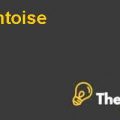John Smithers at Sigtek
Question 1
Smithers is currently being faced with a dilemma where he is anticipating being laid for from his current job from the role of one of the two instructors for the implementation of a Total Quality program at Sigtek, his current employer. Smithers’ assumption of being laid off from work is triggered by the recent news of his boss’s demotion to an insignificant position in the organization. Smithers believes that it will not be long before he would hear about his demotion or dismissal too.
John smithers at sigtek Case Study SolutionBarriers to change
There have been significant factors acting as barriers to this much needed change. For instance, a few managers within the organization showed resistance to change and John had to deal with this by removing these managers from their current roles.
Another major barrier to change was the extreme diversity between the engineering and manufacturing group in the organization. The obvious split or difference between the two groups had created a gulf between these two strategic departments of the same organization which meant that the engineering staff was completely isolated from the rest of the organization. Bringing about change in an organization in terms of creating uniformity through Total Quality program is already faced with diverse cultures that can be rather challenging.
In addition to this, the head of the manufacturing group, Richard Patricof can be identified as a barrier to change as well since rewards resources follow the status quo. His reluctance to accept new management practices and to reward those who adopted them can be identified as a major factor why his sub-ordinates may not be willing to accept the new management practices that Smithers wanted to implement via Total Quality program.
Furthermore, the organization’s reluctance to work in teams was another barrier to change. This had been experienced by Smithers several months back when he had tried to create cross-functional teams but the reluctance to attend team meetings and the low attendance during these meetings had shown how teams were not enthusiastic about working in groups.
Drivers to change
While these barriers to change may be there, several factors can be identified which were drivers or forces that initiated this change. While some managers may be resistant to change, there were several others who wanted the change to be implemented as evident by the feedback given by one manager before his resignation. He wanted the fight between the heads of the manufacturing and engineering department to end in order to get further clarity at work.
In addition to this, several other factors were acting as drivers to change. With Sigtek looking for growth in the next five years in the telecommunications industry, change was needed in the organizational culture to bring about uniformity and co-ordination between operations.
With rising competition in the market and the company’s products being amongst other commodity products, Sigtek needed differentiation within the organization which could differentiate it from its competitors.
In addition to this, change had become inevitable especially as Sigtek had been bought by another company and the new parent company Telwork had made it clear that it wanted to influence how each of its subsidiaries worked. The fact that Sigtek was not a subsidiary of Telwork made it clear that the parent organization was expecting the company to implement its newly formulated Total Quality Program by the way it was getting it implemented across all subsidiaries. With challenges in the form of a haphazard design process, inadequate documentation and a high employee turnover rate; Sigtek needed to change in order to become eligible enough to come under Telwork’s corporate umbrella.
Question 2
Appendix 1 shows Kotter’s eight-stage change management process which would be used to evaluate the change management initiative at Sigtek. It can be seen that the implementation of the change followed a reactive approach rather than being a proactive approach for the betterment of the organization. As per Kotter’s model, the ‘sense of urgency’ was created after Telwork made it clear that it wanted to influence how its subsidiaries worked (Kotter, 1996). In addition to this, the Total Quality program was also formulated by Telwok. The sense of urgency had already been established after this formulation since Sigtek had to change internally to adapt to Telwork’s culture.
As per Kotter’s model, the second step involves the creation of the guiding coalition which in simpler terms refers to the creation of a group that has the power to lead the change (Kotter, 1996). In the approach taken at Sigtek, Andrew Cross’s decision to make Smithers one of the site instructors for the Total Quality program was a step taken for the creation of a guiding coalition. Not only was Smithers known for his infectious enthusiasm which made him a popular leader, he had an easy egalitarian manner which worked well with his immediate peers and sub-ordinates. Sam Murphy from the manufacturing group was paired with Smithers and both resources showed utmost commitment to the project while setting aside their own differences. The remaining team was largely hand-picked by Patricof.
As per Kotter’s third step, the instructors for change are supposed to develop a vision and strategy so that the future is different from the past (Kotter, 1996). Apart from being a major decision-making phase, this time phase also requires the leader to motivate people to take action in the right direct in addition to coordinating their actions. This step was followed systematically at Sigtek especially as six Total Quality Goals were established for the program to clearly…………..
John Smithers At Sigtek Case SolutionThis is just a sample partial case solution. Please place the order on the website to order your own originally done case solution.
Describes the ill-fated effort to bring the overall quality of the program. Using the point of view of one of the leaders chosen as the quality of the instructor, it traces the rise and fall of quality efforts during his short life for six months. Allows students to identify many of the things that can undermine the implementation of the changes: lack of corporate commitment, overly formalized programs, high expectations, the lack of initial success, etc. “Hide
by Todd D. Jick Source: HBS Premier Case Collection 9 pages. Publication Date: 05 Oct 1990. Prod. #: 491035-PDF-ENG
How We Work?
Just email us your case materials and instructions to order@thecasesolutions.com and confirm your order by making the payment here












